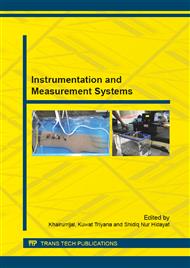p.3
p.9
p.13
p.17
p.21
p.25
p.29
p.33
A Computer-Based Marine Automatic Radar for Rain Detection
Abstract:
An improved rain detection system has been developed using a marine radar. The rain detection system is composed of a Furuno 1932 Mark II marine radar (radar scanner and display units), a radar control circuit, a signal conditioning circuit, an analog to digital converter (ADC), and a computer with a graphical user interface (GUI). The combination of the microcontroller and optocoupler in the radar control circuit was able to replace the omnipad and pushbutton control and it was also employed to activate the radar and the sector blanket mode. The signal conditioning circuit along with the ADC and the clutter removal made the video and navigation signals from the display unit become ADC-counted rain data. By comparing the ADC-counted rain data of the Furuno marine radar with the reflectivity obtained by GMR X Band weather radar, it was found that the Furuno rain detection sensitivity only spans from 30-55 dBZ.
Info:
Periodical:
Pages:
9-12
Citation:
Online since:
July 2015
Keywords:
Price:
Сopyright:
© 2015 Trans Tech Publications Ltd. All Rights Reserved
Share:
Citation:


